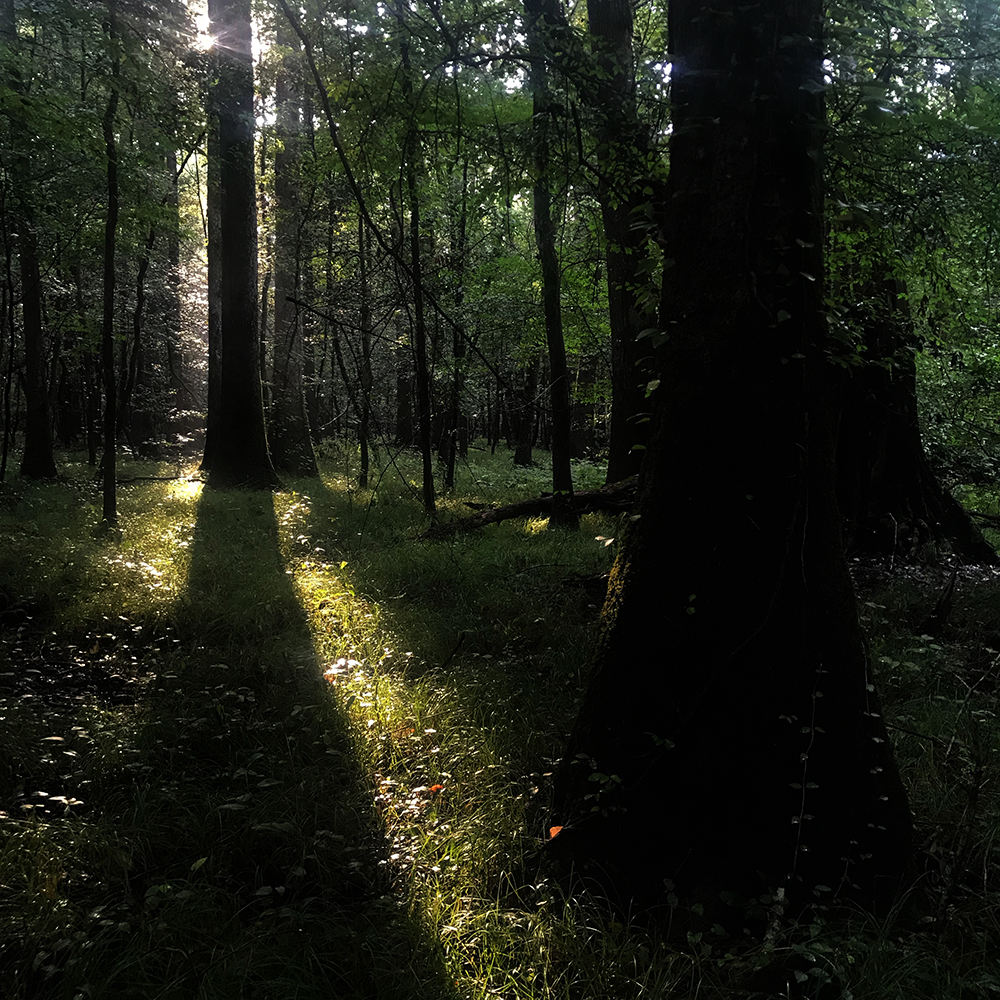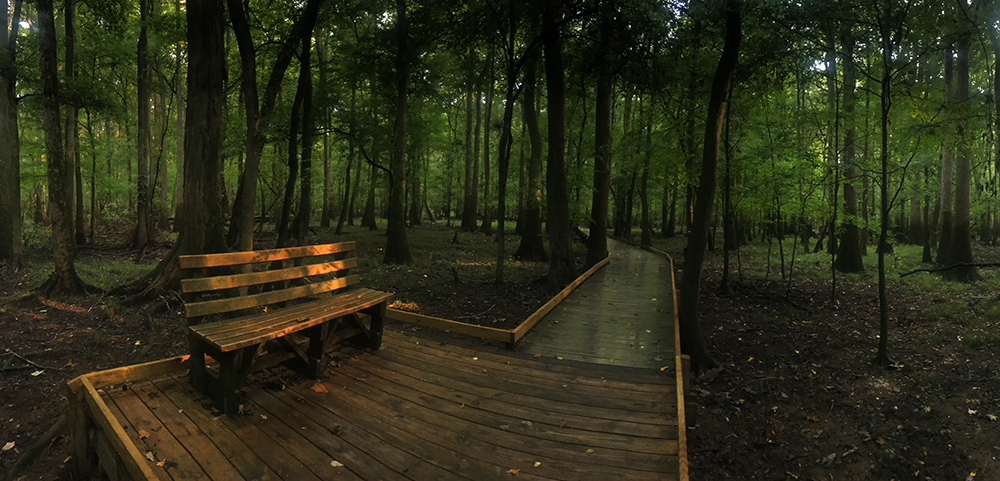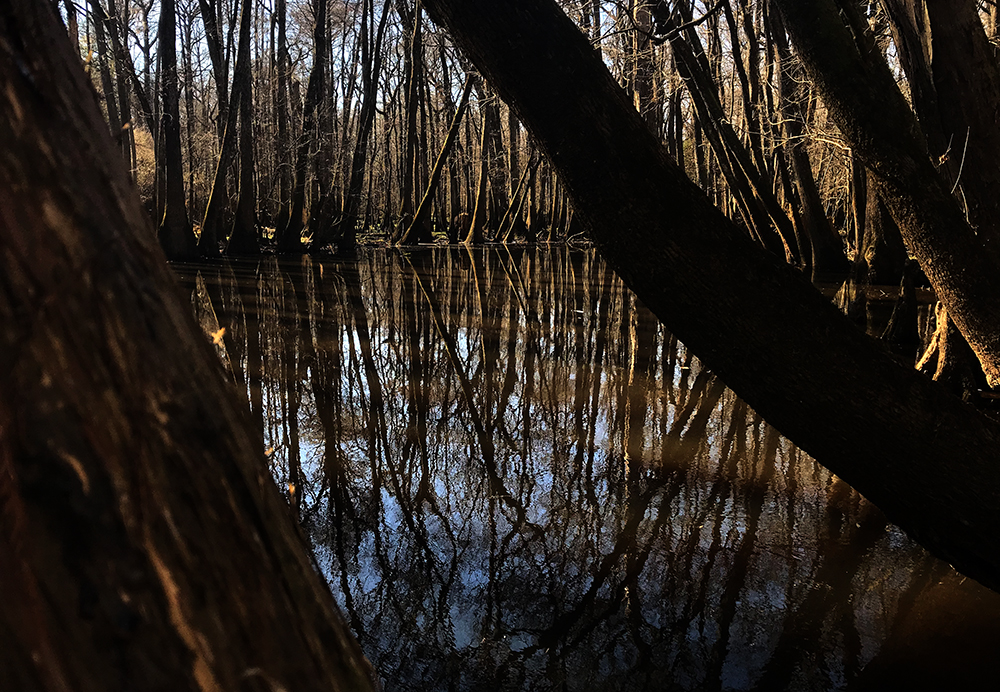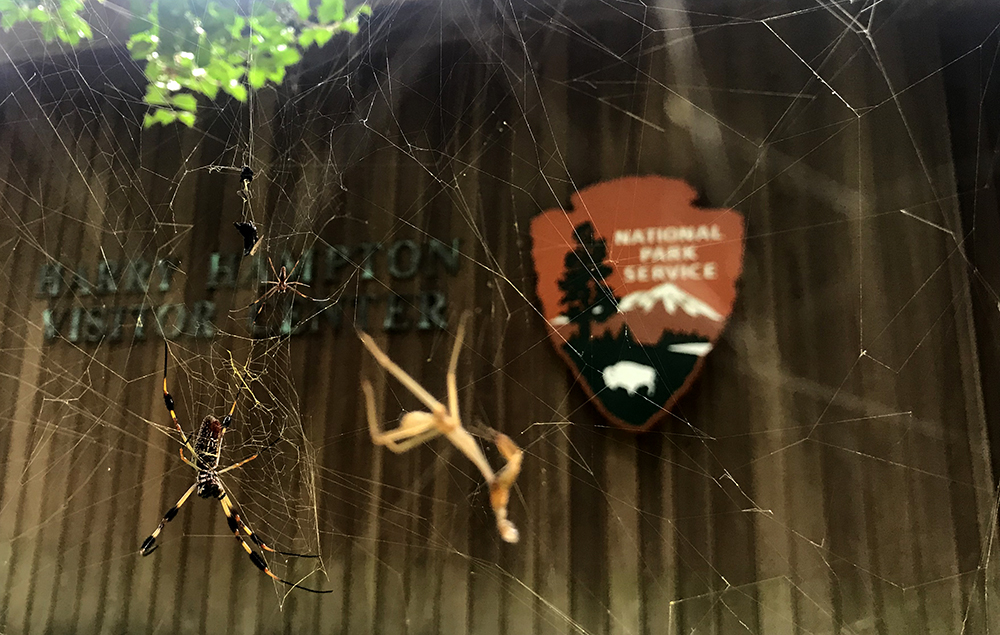Although many have never heard of it, Congaree National Park is known for its big trees. In tree circles, it’s known as the “Redwoods of the East”.

Guide to Congaree
Congaree National Park
A short 20 miles outside South Carolina’s capital city of Columbia lies Congaree National Park. This is a wild, untamed park, and lacks many of the services that national park visitors may be accustomed to in more popular destinations. That said, it is a land of record-holding trees and its forests can transport its guests to an eastern U.S. that existed prior to European arrival.
Here, flanked by a jungle-like backdrop, stands the second tallest forest in the United States, one of the tallest temperate deciduous forests in the world and the largest remaining old-growth bottomland forest in the United States.
Within Congaree’s boundaries stand an impressive number of champion trees. The park is home to an astonishing six national champion trees in terms of height, and 23 state champion trees in the same category.
The largest species of pine on the east coast, the loblolly pine, placed its tallest member in this park. As of 2019, this tree is measured by tape-drop at 169.5 feet, which leaves it a mere 16.5 feet shy of tallest tree east of the Mississippi, which is a Boogerman white pine in nearby Great Smoky Mountain National Park.

This is just the beginning. Congaree holds the tallest sweetgum (157 feet), cherrybark oak (154′), American elm (135′), swamp chestnut oak (133′), overcup oak (131′) persimmon (127′) and laurel oak (125′). The list of giants continues…
Forestland such as this once covered an estimated 24 million acres, stretching from Virginia to Texas. Today, Congaree National Park covers nearly 27,000 acres, 11,000 of which are considered old-growth forest.
Such forests are fed a nutrient rich supply of water from two adjacent rivers. The Congaree and Wateree Rivers transport water from a watershed of more than 14,000 square miles, or the size of the state of Maryland. Their waters flow toward the Atlantic, but when rains provide more water than they can handle, their banks flood, and the area of Congaree National Park becomes flooded. This flooding occurs an average of 10 times per year, and buries the park underwater, and water levels in the park can rise and fall up to 10 feet.

The park offers 25 miles of hiking trails, including the popular 2.5 mile boardwalk loop that allows dry passage through a nice portion of the cypress forest. Off trail travel is cool, but you’ll probably want a nice pair of wading boots. Travel in any direction is sure to soon be inhibited by a slough or gut (local slang for a waterway). Wandering about in any swamp is a recommended park junkie activity.
Of course, a more civil way to see the park’s backcountry features would be a canoe or kayak trip on Cedar Creek, or the Congaree River. Popular routes begin at the South Cedar Creek Trailhead, where the Kingsnake hiking trail also begins. Out and back water trips can begin here, or a through-paddle down the Congaree can depart from here.
Initial map study may tempt watercraft owners to undertake a park crossing from Bannister Bridge to the South Cedar Creek trailhead. Unfortunately, this is not the best idea. Park junkie attempted this in 2019 and experienced utter failure. Rangers warned of more than 30 portages due to downed trees and lower water levels. This was found to be true, and with three portages in the first 100 yards, the trip was abandoned in favor of a relatively painless paddle from South Cedar Creek.

Evening ranger programs include the super-cool “owl prowl”, an evening stroll to hear and see owls and other nocturnal residents of this forest. The park also offers ranger-led canoe trips that often can be arranged at the visitor center.
This is a park free of crowds. There is little in the way of services offered here. Camping is available at the Longleaf Campground, which offers walk-in sights, or the backcountry Bluff Campground. There are no lodging or dining options in or near the park. The closest services of such nature will be found in nearby Columbia.
Congaree is a special place. It may not hold the excitement of the more famous parks, but if you want a place to get away from the masses and to experience a park that offers a glimpse of what our world was like prior to the onslaught of civilization, this may be your ticket.
Trails and waterways in Congaree offer solitude. A quiet evening spent simply sitting on a bench along the forest boardwalk can provide an opportunity to observe nature in its original form… Just watch and listen… Something will talk to you…
See ya there…
Guide to Congaree
Relevant Links
National Park Guides

All content found on Park Junkie is meant solely for entertainment purposes and is the copyrighted property of Park Junkie Productions. Unauthorized reproduction is prohibited without the express written consent of Park Junkie Productions.
YOU CAN DIE. Activities pursued within National Park boundaries hold inherent dangers. You are solely responsible for your safety in the outdoors. Park Junkie accepts no responsibility for actions that result in inconveniences, injury or death.
This site is not affiliated with the National Park Service, or any particular park.
